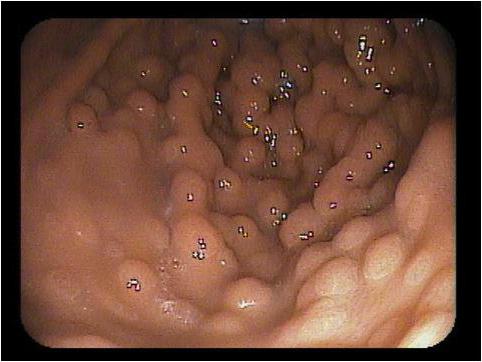There are many pathologies that are inherited and laid at the genetic level. Nevertheless, some of them do not appear immediately, but only in adulthood. Among these diseases, Gardner syndrome . This pathology refers to benign neoplasms, sometimes it tends to malignancy, that is, it passes into cancer.
Description of Gardner's Syndrome
This pathology has become known relatively recently. It was first described in the mid-20th century by the scientist Gardner. It was he who established the connection between benign formations of the skin, bones and digestive tract. Another name for the disease is a familial (or hereditary) adenomatous polyposis. Gardner's syndrome is not only terrible for numerous cosmetic skin defects. It is believed that polyposis of the large intestine becomes malignant in 90-95% of cases. For this reason, pathology is referred to as obligate precancerous conditions. The differential diagnosis is carried out with atheromas, Ricklenghausen syndrome, single osteomas and intestinal polyps.
Causes of the disease and development mechanism
Gardner's syndrome refers to hereditary pathologies. It is transmitted at the genetic level from parents and other family members (grandparents). The type of inheritance of this disease is autosomal dominant. This means a high probability of transmission of the pathology from parents to children. At the heart of the development mechanism of Gardner's syndrome is mesenchyme dysplasia. Since the skin, bones and mucous membrane of the gastrointestinal tract are formed from this tissue, the clinical picture characteristic of this disease is observed. In addition to the hereditary predisposition, mesenchyme dysplasia can form under the influence of harmful factors affecting intrauterine development in the first trimester of pregnancy.
Gardner's syndrome: symptoms of the disease
Most often, the disease manifests itself in adolescence (from 10 years). In some cases, the first symptoms begin later - already in adulthood. Gardner's syndrome has the following manifestations: these are neoplasms of the skin, soft tissues, bones and digestive system. In addition to the intestines, polyps can appear in the stomach and duodenum. On the skin, atheromas, dermoid and sebaceous cysts, fibromas can be observed. The appearance of benign formations of soft tissues is also possible. These include lipomas and leiomyomas. All of these neoplasms can occur on the face, scalp, arms or legs. In addition, bone lesions occur. They also belong to benign formations, but often impede functions. For example, osteomas of the bones of the lower jaw, skull. These growths interfere with chewing, can put pressure on brain structures. The most formidable manifestation of the disease is polyposis of the intestine and other organs of the gastrointestinal tract. In most cases, neoplasms of the mucous membrane of the digestive tract are malignant, that is, they pass into cancer. Polyps can not make themselves felt for a long time. Most often, patients complain of complications: intestinal obstruction, bleeding.

Gardner Syndrome Treatment in Cuba: Benefits
Since the disease belongs to obligate precancer, surgical removal of neoplasms is necessary. It is very important to diagnose Gardner's syndrome in a timely manner. Photos of patients can be seen in the literature on oncology or on special sites. In addition to clinical manifestations, it is necessary to carry out an X-ray of the digestive tract, a colonoscopy. Skin lesions and intestinal polyposis make it possible to make a correct diagnosis. Gardner syndrome is treated in many countries. The advantages of Cuban clinics include the latest equipment, the cost of surgical interventions, highly qualified specialists from around the world. Treatment consists in removing the affected part of the intestine. You can also get rid of cosmetic skin defects.